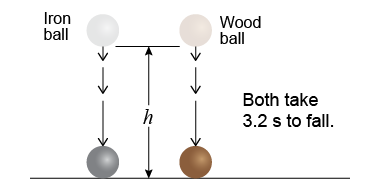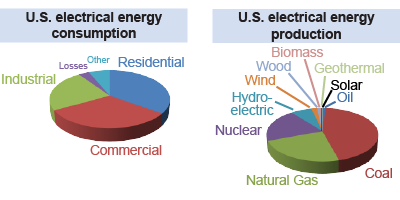
- Sarah claims that heavier objects fall faster than lighter objects. To evaluate Sarah’s claim, objects of the same size but different masses are dropped from the same height. Each takes 3.2 s to hit the ground.
- Is Sarah’s experimental design effective for testing her claim? Explain.
- Is Sarah’s claim supported by the evidence from the experiment?
- If Sarah’s claim were true, what would happen when you tied two objects together and let them drop? Does this make sense?
- Propose a new claim that explains the rate at which objects fall and agrees with the evidence.
- Devon claims that summer occurs when the Earth is closer to the Sun in its orbit, and winter occurs when the Earth is farther from the Sun in its orbit.
- When it is summer in the northern hemisphere, it is winter in the southern hemisphere. Using logic, show how this does or does not support Devon’s claim.
- The Earth is closest to the Sun each year between January 2 and 5, at a distance of 147,098,290 km, and is farthest from the Sun between July 4 and 7, at a distance of 152,098,232 km. Does this evidence support Devon’s claim?
- Storing information digitally has advantages and disadvantages over older analog methods. Which of the following are true of digital information, such as images from a digital camera?
- Repeated recopying will result in lower quality.
- Digital material is easier to protect from copyright infringement.
- Relatively little storage space is required as compared to analog copies.
- Digital files can be transferred quickly and easily over long distances.
- Digital information is expensive to reproduce.
 Two doctors advertise their services. One includes positive quotations from happy patients. The other says he has had the fewest complaints lodged against him at the state board of medicine over the past 10 years. Which promotional claim is more believable? Two doctors advertise their services. One includes positive quotations from happy patients. The other says he has had the fewest complaints lodged against him at the state board of medicine over the past 10 years. Which promotional claim is more believable?
| | - A company claims that its laundry detergent smells four times better than their leading competitor. After reading the fine print, you find that this is based off a survey of 50 people.
- Is their product claim based on empirical evidence?
- Provide a statement that the company could make about their laundry detergent that could be scientifically tested. Explain how it could be tested.
 A medical doctor films an advertisement where she claims that a new pharmaceutical drug is effective at curing pneumonia. An enterprising reporter then uncovers the fact that the doctor has a paid position sitting on the board of directors of the company that produces and sells the new drug. How would you evaluate the claim made by the doctor? A medical doctor films an advertisement where she claims that a new pharmaceutical drug is effective at curing pneumonia. An enterprising reporter then uncovers the fact that the doctor has a paid position sitting on the board of directors of the company that produces and sells the new drug. How would you evaluate the claim made by the doctor?
- What kind of light is represented on a computer screen by an RGB value of
- (255, 255, 255)?
- (0, 0, 0)?
- (100, 100, 100)?
- (255, 0, 0)?
- (255, 0, 255)?
- A company claims that their glue is so strong that 2 ml of their glue can attach a 1,000 lb object to a wall. You use this glue to hang up several pictures around your home, which all weigh less than 3 lb, yet all of them fall down after four days. Was this company’s promotional claim correct?
- A taxi service claims in its advertising that its service has the safest drivers in the city. This company has the second most car accidents of the four biggest taxi companies in the city. Of those same four companies, this one particular company has the most drivers who have been pulled over for speeding. Do you believe its claim?

- The graphs show electrical energy consumption and production.
- What group uses the most electrical energy?
- What sector produces the most electrical energy?
- How did you infer those two answers from a pie chart?
- If all commercial users agreed to cut their energy usage by 20%, which group would be the biggest user of electrical energy in the United States?
|

